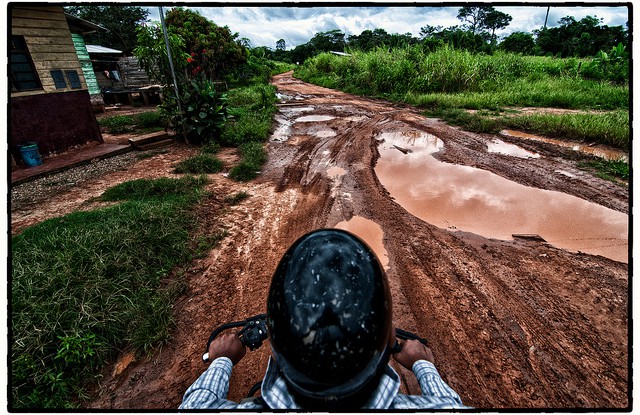
SAN JOSE, Costa Rica (19 August, 2013) – Hunting patterns are changing in the Peruvian Amazon, according to an expert on traditional forest knowledge at the Center for International Forestry Research (CIFOR).
“Increasingly, hunting is moving from forests to fallows, particularly to abandoned timber concessions,” said scientist Miguel Pinedo-Vasquez at the annual meeting of the Association of Tropical Conservation and Biology (ATCB).
“We’re also seeing a shift from hunting large-game species to small game that are becoming abundant in post-concession logged forests,” he said.
Fallow vegetation provides abundant food resources and resting grounds for small-game species to reproduce quickly in forest areas that are free of jaguars and other predators,” said Pinedo-Vasquez, the scientific coordinator of CIFOR’s Global Bushmeat Comparative Study, which is exploring how sustainable tropical forest communities harvest, consume and sell bushmeat in the Amazon, Congo and Mekong River basins.
In Peru, more than 2 million hectares (4.9 million acres) of timber concessions have been reverted, or are in the process of being reverted to the government, Pinedo-Vasquez said.
While policymakers are trying to figure out what to do with post-concession forests, local people are increasingly using them as hunting grounds, for the collection of wood residuals and other resources, he said.
Often regarded as “degraded lands”, post-concession logged forests have rarely been studied as hunting grounds.
“Large-game species have indeed been banished from post-concession logged forests, but these forest areas have become the main hunting grounds for rodents and other small game,” Pinedo-Vasquez said.
His research team conducted two preliminary hunting surveys in 32 communities located around 8 post-concession forests in Ucayali and Loreto in Peru to identify hunters, record hunting systems, and map hunting grounds.
Rural teachers and students from the Universidad Nacional de la Amazonia Peruana (UNAP) were trained to record species, harvest amounts and uses of wild meat harvested in each community.
“The amount of bushmeat harvested by hunting small-game species is quite impressive,” Pinedo-Vasquez said.
The 380 families in the study harvested 787 kg (1,735 pounds) of bush meat per month on average.
They consumed 57 percent of this meat, meaning that these forests were playing an important provisioning role in the livelihoods of these rural people, he said. The remaining 43 percent of the meat was sold.
The researchers also found that hunting patterns have changed.
“Now, it’s the women and children who are hunting,” Pinedo-Vasquez said.
FEMALE FACTOR
Unlike men, who hunt large-game species mainly to be sold in markets, preliminary results indicate that women and children are hunting in logged forests for small-game species, like rodents, birds, and turtles, Pinedo-Vasquez said.
“Not only has women’s participation in hunting increased, but women have become key actors in promoting sustainable hunting methods in post-concession forests” he added.
“Women make clear distinctions between managed and unmanaged fallows, demarcating space to manage wildlife populations,” he said.
Women also protect fruit trees and protect vegetation found on riverbanks of small and large streams, which are crucial for supporting animals they hunt, he added. Women are also increasingly establishing rules to maintain sustainable wild-meat procurement in fallows left by forest concessionaires.
“They conserve to hunt and hunt to conserve,” said Pinedo-Vasquez.
But instead of looking at hunting just from a wildlife conservation viewpoint, Pinedo-Vasquez is adding a nutritional perspective — examining how small-game species constitute the main source of protein for rural families.
In Ucayali, 24 percent of the people surveyed in rural communities said they ate small-game meat, as opposed to a mere 8 percent in urban areas, as has been reported by the Ucayali Provincial Municipality in the city of Contamana, he said, adding that the statistics reinforce the importance of small game meat to many local diets.
For further information on the subjects discussed in this blog, please contact m.pinedo-vasquez@cgiar.org
This work forms part of the CGIAR Research Program on Forests, Trees and Agroforestry.
We want you to share Forests News content, which is licensed under Creative Commons Attribution-NonCommercial-ShareAlike 4.0 International (CC BY-NC-SA 4.0). This means you are free to redistribute our material for non-commercial purposes. All we ask is that you give Forests News appropriate credit and link to the original Forests News content, indicate if changes were made, and distribute your contributions under the same Creative Commons license. You must notify Forests News if you repost, reprint or reuse our materials by contacting forestsnews@cifor-icraf.org.